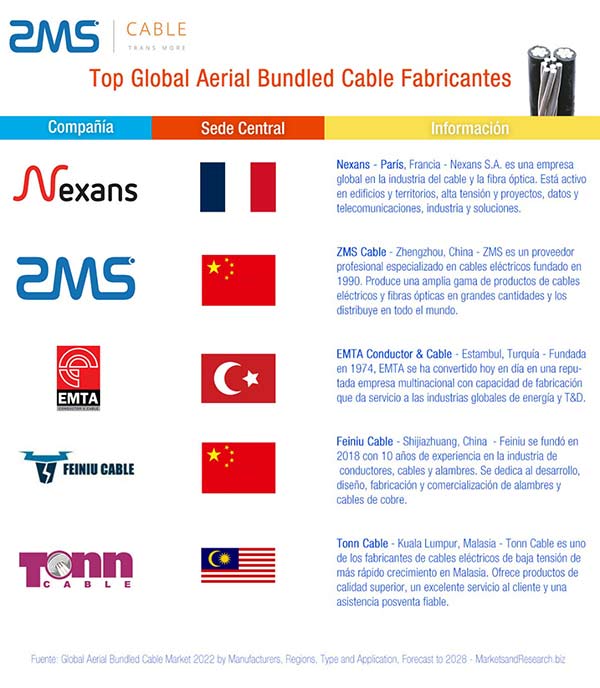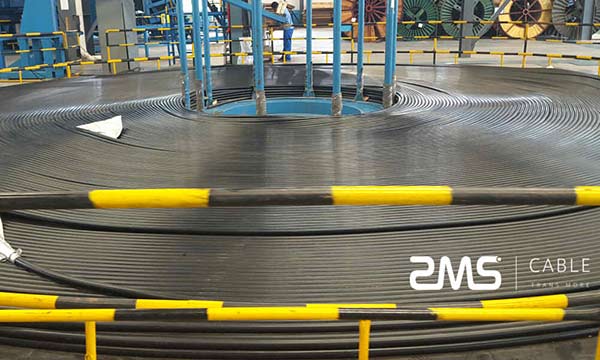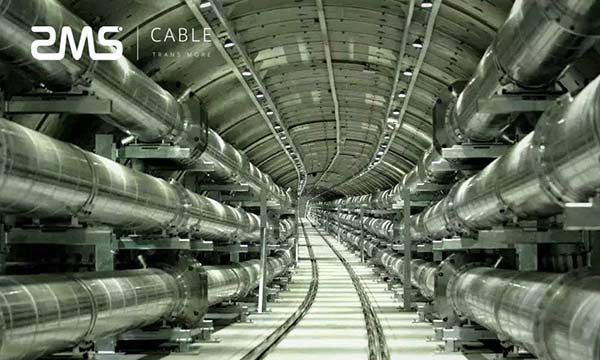The wire and cable industry underpins the functioning of modern economies and societies. This report focuses on the 10kV and above cable industry and highlights high capacity, underground, and energy efficiency as future trends in the cable industry.
Cables of 10kV and above are mainly used in power generation, transmission, and distribution, as well as in some large industrial and commercial buildings. In terms of technical form, 10kV and above cables are currently available as overhead lines, underground cables, and GIL (gas insulated transmission lines).
Each of these three technical solutions has its advantages and disadvantages. The main advantage of overhead lines is that they are cheap and the disadvantage is that the support facilities take up a lot of space. Underground cables have the advantage of not taking up much space, but the disadvantages are that points of failure are difficult to detect and the insulation is susceptible to deterioration, while the advantages of GIL are that it performs well and does not take up much space.
It is expected that these three transmission methods will continue to be the primary means of building the power grid and supporting the construction of large-scale power systems.

1. New Conductors Increase Transmission Capacity of Overhead Lines
Because the overhead transmission system relies primarily on air insulation, it is the most common solution for high-voltage transmission away from cities because of its low cost, large area, and high capacity. Lines of 750 kV and above will be used almost exclusively for very high voltage transmission projects over long distances. With the acceleration of new power system construction, the overall demand for grid transmission capacity is expected to accelerate.
Recently, MarketsandResearch.biz published the “Global Aerial Bundled Cable Market 2022 by Manufacturers, Regions, Type, and Application, Forecast to 2028.” The report forecasts steady growth for aerial cables by 2028 for the leading companies in the cable industry (Nexans France, ZMS Cable Group, EMTA Conductors and Cables, etc.).
The future trend for overhead lines will be to increase capacity. New construction projects can be more energy-efficient conductors, and already built projects can be upgraded with additional capacity.
(1) Energy-saving wire for new projects, saving transmission losses.
Traditional wire for aluminum strands with a steel core. To improve the overall conductivity of the conductor and reduce losses, the usual idea is to improve the conductivity of the outer section of the aluminum strand or use a higher conductivity of the carrier core.
The outer stranded section can be made of a hard aluminum alloy with high conductivity (61.5%-63% IACS) or soft aluminum (63% IACS). However, due to the low tensile strength of soft aluminum, a stronger carrier core, such as a carbon fiber composite core, is required. Since soft aluminum also has excellent high-temperature resistance, it is more suitable for capacity-building projects.
For the load-bearing part, a high-strength aluminum alloy core (52%-55% IACS) can be used instead of a steel core. This results in a higher conductivity of the aluminum alloy core strand, which also has excellent tensile strength. Therefore, new projects mainly use energy-saving conductors with high-conductivity aluminum, aluminum alloy, or all-aluminum alloy cores.
(2) Capacity-added conductors are suitable for existing projects and are extremely cost-effective.
Theoretically, there are two main methods to increase the capacity of constructed lines.
(1) By replacing the conductor with an overhead conductor of the larger cross-section. However, increasing the cross-sectional area of the cable greatly increases the total weight of the overhead conductors, making them unviable for electrical towers. Therefore, a new electrical tower would have to be rebuilt. This method involves high investment, a long construction period for reconstruction, and a very low overall cost.
2) Replace the conductor only with a capacitor conductor. The increase in capacity can be achieved without increasing the total weight of the conductor too much. It has the advantages of no tower replacement, low total investment, and a short construction period. With a capacity increase of 30-150%, it is usually possible to meet the capacity requirements of medium-term developments and is a very cost-effective option.
Overhead lines must be able to operate at a normal temperature of 100 to 150 degrees. In this regard, there are two technical ideas for improving the wire’s resistance to high temperatures. One is the use of a flexible aluminum wire with a very strong core that can withstand high temperatures. The other is the use of heat-resistant aluminum alloy wire with the addition of rare earth elements such as zirconium and yttrium. With proper design and selection, capacity can be increased by simply changing the conductor.
In summary, aluminum, aluminum alloy core, or full aluminum alloy as the representative of energy-saving wire, and heat-resistant aluminum alloy, soft aluminum wire, and carbon fiber composite core type as the representative of the capacity of the new wire is an important development direction of the future.

2. Urban development and offshore wind power to promote the rapid development of the cable industry
Underground cables.
Despite the excellent cost-effectiveness of overhead lines, new urban transmission and distribution lines are increasingly built using underground cables due to space, environmental protection, and operational safety constraints. In addition, existing urban overhead lines will increasingly be converted to underground cables. There is a clear trend toward burying urban power networks.
Submarine cables.
Offshore wind power, which represents a significant portion of the future of new energy generation, is one of the fastest growing sectors of the future. Submarine power cables benefit not only from the growth in installed capacity of offshore wind power but also from the growth in the distance of offshore wind power. In the context of the global energy revolution, submarine cables are expected to experience an exceptional period of development as the preferred solution for networking power between land and islands.

3. Very high capacity transmission: GIL corridors
GIL transmission systems consist primarily of a grounded aluminum alloy shell and integrated aluminum tubular conductors insulated with gases such as SF6.
GIL transmission technology is expected to be used more often in high-power applications. With the gradual increase in urban electrical loads, there are already situations in some medium and large cities or industrial parks where cables cannot meet the power requirements.
GIL lines have lower transmission losses, lower capacity effects, and higher capacity than cables, and their high transmission capacity (up to 3000 MVA in a single circuit at 550 kV) allows them to be directly connected to overhead lines in suburban areas.
Although the initial cost ratio of GIL is currently very high, it has a long service life. GIL systems, over 300 km in length, have been in service for over 35 years worldwide and no system failures have been reported to date.
For large capacity transmission systems that do not cover long distances, GIL is a more suitable technology than large cross-section cables that require air-, water- or parallel-cooled structures.
Summary
Through analysis of overhead lines, underground cables, submarine cables, and GIL transmission systems, ZMS believes that the future direction of cable development will be high capacity, underground, and energy efficient. The evolution of technology has led to several new changes in the cable industry, which will result in numerous investment opportunities.
